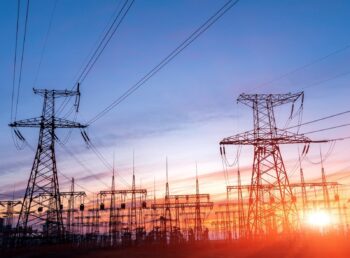
Strangely the data go only until December 2016. And if you look at the data from the source form the University of Colorado, we find the same. So what’s with 2017?
The Silence of the Sea Level Rise
Today we know that satellite data must undergo a number of steps before a sea level rise figure can be reached.
In April 2017 a study appeared in the Geophysical Research Letters, where corrections were made.
As a result, the average sea level rise since 1993 was not 3.3 mm/year, but rather 3.0 mm per year. This was hardly music to the hears of alarmists.
And what was really peculiar was the headline appearing in Nature concerning the study:
Satellite snafu masked true sea-level rise for decades
Revised tallies confirm that the rate of sea-level rise is accelerating as the Earth warms and ice sheets thaw.”
Here Nature unabashedly covered up the lower sea level rise. Also, all the natural variability of ocean cycles was ignored.
The reality is that there is no sign of an increased rate, as Willis Eschenbach at WUWT calculated.
That’s been confirmed by a NASA study appearing in November 2017 in the Journal of Geophysical Research (Beckley et al. 2017):
On the “Cal-Mode” Correction to TOPEX Satellite Altimetry and Its Effect on the Global Mean Sea Level Time Series
Comparison of satellite altimetry against a high-quality network of tide gauges suggests that sea-surface heights from the TOPEX altimeter may be biased by ±5 mm, in an approximate piecewise linear, or U-shaped, drift. This has been previously reported in at least two other studies. The bias is probably caused by the use of an internal calibration-mode range correction, included in the TOPEX “net instrument” correction, which is suspect owing to changes in the altimeter’s point target response. Removal of this correction appears to mitigate most of the drift problem. In addition, a new time series based on re-tracking the TOPEX waveforms, again without the calibration-mode correction, also reduces the drift aside for a clear problem during the first 2 years. With the revision, the TOPEX measurements, combined with successor Jason altimeter measurements, show global mean sea level rising fairly steadily throughout most of the 24-year time period, with rates around 3 mm/yr, although higher over the last few years.
As is the case with the global warming hiatus, there is now scrambling going on for ideas to explain the lack of sea level rise.
A press release issued by the National Science Foundation is floating the idea that volcanoes could be a reason.
The idea ocean cycles might be playing a role obviously has not occurred to the NSF scientists.
Trust “taking a hit”
Vahrenholt and Lüning also write that with all the steps the satellite sea level data have to go through, it is “little wonder that trust in satellite measurements is taking a hit.”
Mörner (2017) suggests putting less emphasis on satellite-based measurements and putting it more on coastal tide gauges (where people actually live). Tidal gauges globally show a sea level rise rate of only 1.5-2 mm/year.
Also, the future does not look anywhere near as bad as it is often portrayed. One reason is that scientists are anticipating increased snowfall over Antarctica, which stores huge amounts of water at the South Pole.
A few years ago Judith Curry stopped doing research and now consults companies and authorities on the subject of climate change.
A number of clients have shown up at her door and asked her to submit a serious analysis of sea level rise over the recent decades and provide an estimate of what to expect in the future.
In a separate Part 2, Curry summarizes her findings:
The geological record for sea level rise provides important context for the recent sea level rise. However, the uncertainties in the geological sea level record are substantial, associated with sparse sampling, uncertainties in the proxy methods and uncertainties in the analysis methods. Is the 20th-century sea level rise unusual? Sea level was apparently higher at the time of the Holocene Climate Optimum (~ 5 ka), at least in some regions. I have not seen an overall assessment of this, but there have recently been numerous publications providing local evidence for higher sea levels during this period. Whether or not sea level was higher during the Medieval Warm Period than current levels remains uncertain, and there is substantial disagreement among different reconstructions on the sea level during the MWP, with the Grinsted et al finding substantially higher sea level values during the MWP (around 1150 AD). Kopp et al. find the 20th-century rate of sea level rise to be the highest in the last 27 centuries. However, since their data is barely resolved at 100-year time scales (with decimeter vertical resolution), I would not place high confidence in their conclusion. Eyeball examination of Grinsted et al.’s Figure 7 shows a possibly higher rate of sea level rise between ~1000 and 1100 AD. Overall, I find Kopp et al.’s analysis to be more convincing (apart from overconfidence in the relative rate of 20th-century sea level rise). The pace of interesting and important paleo sea level rise research seems to have accelerated since the publication of the AR5, I will be following this closely.”
Read more at No Tricks Zone
















This is the solution to protect Florida from, Sea level rise and Hurricane:
https://youtu.be/tRn4eUQ3ewY
Adapting the Mediterranean to the sea level rise:
https://youtu.be/9bbFyKE2DWw
#PresaPuente
What sea level rise ?
All that jerks like you have to do is
STOP LYING
And everything will be OK
You will even be able to enjoy your drugs.
Does this mean Malibu property owners don’t have to move their beach chairs for another couple of century’s ?
What ever happened to Dicaprio’s eco horror flood propaganda ?
Maybe Hollywood should clean up it’s own pig pen before trying to frighten people with fake floods and the notion if only less fossil fuel was used the Club Of Rome and the UN could set the earths temperature .
Has anyone thought about what these numbers mean? Alarmists are disappointed at a rise of 3.0 rather than 3.3 mm a year. An alarmist commenting on this site claimed it was 3.7 mm a year. Now, think what this all means. For what is probably the real rate, that is 30 cm per century, or for us Americans 11.8 inches. The high alarmist rate is 37 cm per century, or for Americans 14.6 inches. The arguing is for a difference in value under 3 inches.
If the high rate causes problems any where, then it is because of other issues.
But, but the sea floor is sinking. That’s why the sea levers haven’t been rising. This according to “climate experts”.
Ralph, how do you get a picture instead of the “G” to appear for your comments?
Abandon satellite data and actually go out into the real world?!?
Have you seen some of these ‘researchers?’ They have beards, flannel shirts, Levi’s, boots and backpacks but they drive high-end cars and SUV’s and haven’t been out in the field since they were grad students!
They want to pretend to be ‘field’ researchers while staying comfy and cozy in their nice warm and dry offices.
So much for the flooded earth as was depicted in that dumb movie WATERWORLD with Kevin Kosner as some did-wad named Mariner with dumb gills